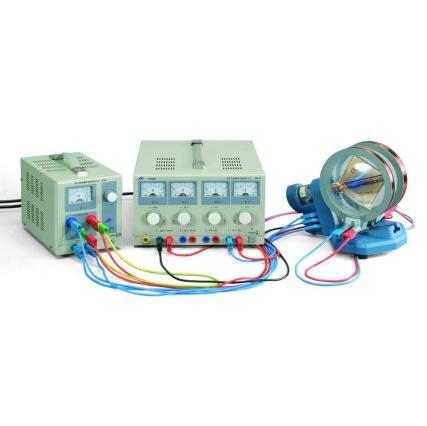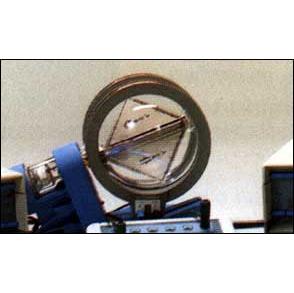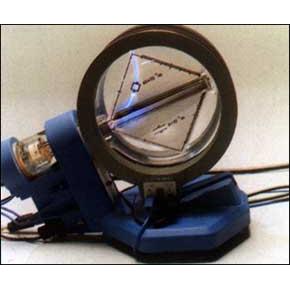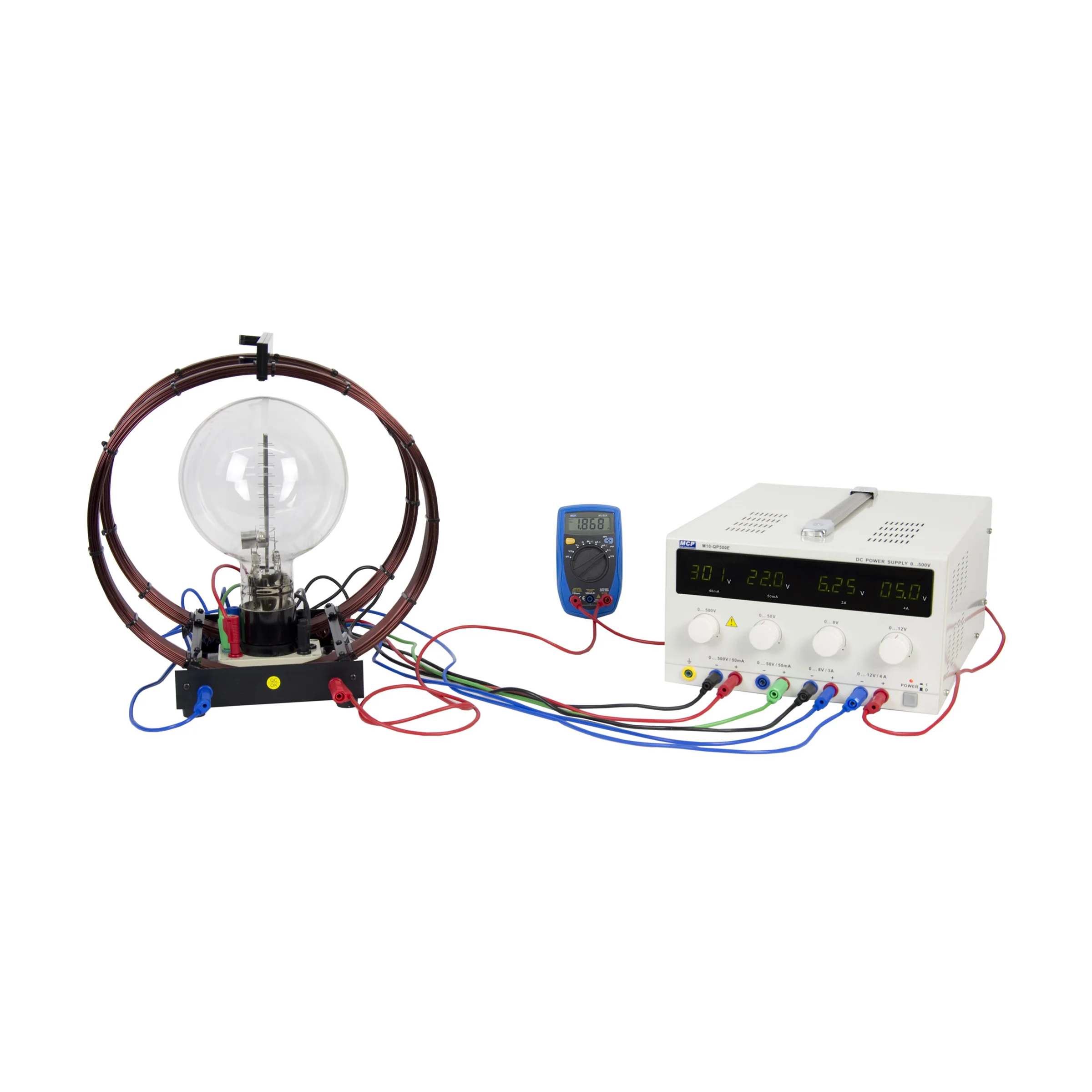Thomson e/m System




Thomson e/m System
TEL-2525SYS3
Recreate the first experiment to measure the charge to mass ratio of the electron. Your students can deflect the electron beam with electrostatic forces, magnetic forces, or both. This experiment helped usher in modern physics at the turn of the twentieth century, and provides the ability to calculate the speed of the electron beam by balancing electrostatic and magnetic forces.
TEL-2525SYS3
Knowledge of the electron is fundamental to understanding atomic structure. Part of this knowledge is knowing the electron's constants. J. J. Thomson, nearly a century ago, successfully measured the charge-to-mass ratio of an electron. Within 20 years Millikan carefully determined the charge of the electron thus enabling its mass to be calculated. With the Thomson e/m Tube you can perform this important classical experiment to determine the charge-to-mass ratio of the electron.
The Thomson e/m Tube is an evacuated tube in which a scale is printed on one side of a semitransparent square mica card. This card is held in place by two metal plates which can provide an Electric Field, E. Helmholtz Coils held in place by the Universal Stand can then provide a Magnetic Field, B at right angles to the Electric Field. A phosphor on the opposite side of the mica card will show the parabolic path of the electron beam in an Electric Field and the circular path of the beam in a Magnetic Field.
A beam of electrons is generated from a hot filament. This beam is accelerated through the Magnetic and Electric Fields which are at right angles to each other and in a path that is perpendicular to the Electric Field. Using the kinetic energy formula 1/2mv2 and the Lorentz equation F=eE+evXB, (which describes the force on a charged particle in a Magnetic and Electric Field), permits one to calculate e/m. You can determine e/m using Thomson's method. You can also calculate e/m by using just the Magnetic Field.




